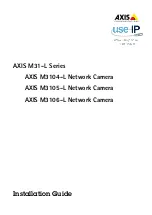
16-Port 10/100Mbps Fast Ethernet Switch (Desktop) User Guide
6
switch bridges and transmits Ethernet packets at the MAC
address level of the Ethernet protocol, among connected
Ethernet or Fast Ethernet LAN segments.
Switching is a cost-effective way of increasing the total
network capacity available to users on a local area network.
A switch increases capacity and decreases network loading
by dividing a local area network into different segments.
Each segment has its own bandwidth and it does not
compete with others for network transmission capacity.
A switch acts as a high-speed selective bridge between the
individual segments. The switch forwards traffic from origin
segment to destination segment, without interfering with
any other segments. By doing this, the total network
capacity is multiplied, while still maintaining the same
network cabling and adapter cards.
For Fast Ethernet networks, a switch is an effective way to
eliminate problems of uplinking Fast Ethernet hubs beyond
the “two-repeater limit.” A switch can be used to split parts
of the network into different collision domains, making it
possible to expand your Fast Ethernet network beyond the
205-meter network diameter limit. The switch supports
both traditional 10Mbps Ethernet and 100Mbps Fast
Ethernet, which is also ideal for bridging between the
existing 10Mbps networks and the new 100Mbps networks.
LAN switching technology is a significant improvement
over the previous generation of network bridges, which
were criticized because of their higher latencies. Routers are
also used to segment LANs. However, since routers are
expensive, difficult to setup, and require intensive
maintenance, they are relatively impractical for the
network. Switches, on the other hand, are less expensive,
easier to set up, and practically maintenance free, which
make them an ideal solution to today's LAN congestion


































